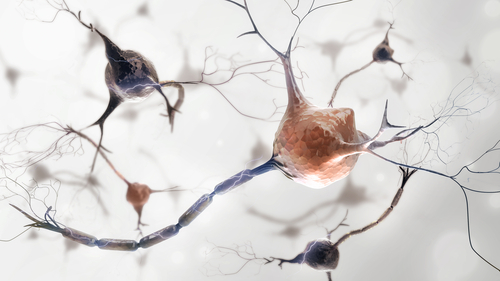Modulation of Specific Molecule May Help Treat Subtypes of CMT, Study Shows

Modulation of Nrg1TIII signals improves production of the nerve cells’ myelin protective layer in mice with Charcot-Marie-Tooth type 1B, a study shows.
Reactivation of these signals or inhibition of their natural regulators may represent a way to overcome the loss of myelin that occurs in CMT.
The study, “Enhanced axonal Neuregulin-1 type-III signaling ameliorates neurophysiology and hypomyelination in a Charcot-Marie-Tooth type 1B mouse model” was published in the journal Human Molecular Genetics.
Most Charcot-Marie-Tooth (CMT) subtypes are characterized by reduced levels of myelin, and consequent damage to peripheral nerve cells. The development of strategies that focus on myelin levels could result in an effective approach to treat CMT in general.
Axonal neuregulin 1 type III (Nrg1TIII) is a known trigger of important signals that define myelinating (formation of myelin) or non-myelinating cellular behaviors. Also, the levels of Nrg1TIII have been shown to determine the amount of myelin and its thickness, working as “an essential instructive signal in peripheral myelination,” researchers said.
The team explored the potential of Nrg1TIII as a therapeutic target for CMT in a mice model of CMT1B that shows reduced myelin production.
First, the team genetically modified CMT1B mice to force the production of high levels of Nrg1TIII protein.
They found that these animals had significantly faster nerve responsiveness than control (not modified) CMT1B mice. Nerve conduction velocity values returned closer to normal standard values, suggesting that Nrg1TIII at higher levels can lead to a “significant amelioration of neurophysiological parameters,” they stated.
In addition, high levels of Nrg1TIII were found to improve myelin thickness and support remyelination of small and medium nerve fibers. However, the data also suggested that increased Nrg1TIII levels partially corrected reduced myelination, but without rescuing demyelinated cells.
The team also found that Nrg1TIII-forced myelin production did not have a toxic effect on Schwann cells — the cells responsible for producing myelin — so it could be a safe strategy to improve remyelination.
“Taken together, our data suggest that the modulation of Nrg1TIII activity may represent a suitable approach to treat” CMT1B and other similar neuropathies, researchers said.
Next, the team used a chemical inhibitor that prevented the activity of TACE enzyme, which is known to limit the amount of functional Nrg1TIII. Because the inhibitor cannot cross the blood-nerve-barrier, the team had to test it in the lab with cells collected from the CMT1B mice.
Once again, reactivation of Nrg1TIII significantly increased the number of myelinated nerve cell segments.
Supported by these findings, the team said that “novel inhibitors with improved blood-nerve-barrier permeability could represent promising therapeutic candidates for hypomyelinating CMTs.”





